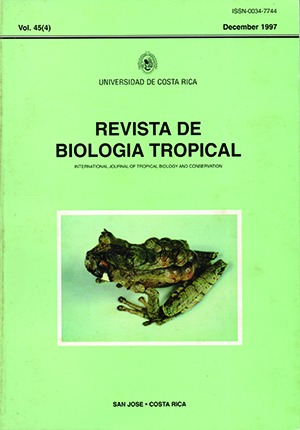Abstract
Pollination of the pistillate fig flowers (Ficus spp.) has crucial effects for the figs and the pollinating wasps (Agaonidae). It a1lows nonnal development, of seeds and wasps. Sorne agaonid groups have evolved pockets and corbiculae to carry pollen, wlúle others carry it in the intersegmental membranes and other hidden areas of the body. Single female specimens of Pleistodontes rieki Wiebes, Robertsia mandibularis Boucek, Tetrapus americanus Mayr and Tetrapus sp., the first two from New Guinea and theTetrapus spp. from Costa Rica were studied with scanning electron microscopy. Sorne Pleistodontes species (Old World) have pollen cavities in the expanded scapes; theyalso carry pollen in the ridges and laminae of the mandib1es. Tetrapus species (New World) carry pollen in cavities located behind the mandibular appendages and in the lamellae, ridges and teeth of the mandibles. These ways of carrying pollen may be intennediate between pollen transport in the intersegmental membranes, and in pockets or corbiculae. The evolution of such mechanisms may preserve pollen from desiccation. These structures may have similar functions to the pollinium of sorne plants that are a1so pollinated by specific insects. It is suggested that sorne fig wasps that become dusted with poli en in the syconia where they develop, and remove most of it once outside, fill up the "spurÍous" pockets, and other elaborate pollen-carrying structures outside the syconia. Abundant pollen grains were also found among the mouth parts of Robertsia mandibularis (Sycoecinae) a non-pollinating fig wasp.##plugins.facebook.comentarios##

This work is licensed under a Creative Commons Attribution 4.0 International License.
Copyright (c) 1997 Revista de Biología Tropical
Downloads
Download data is not yet available.


